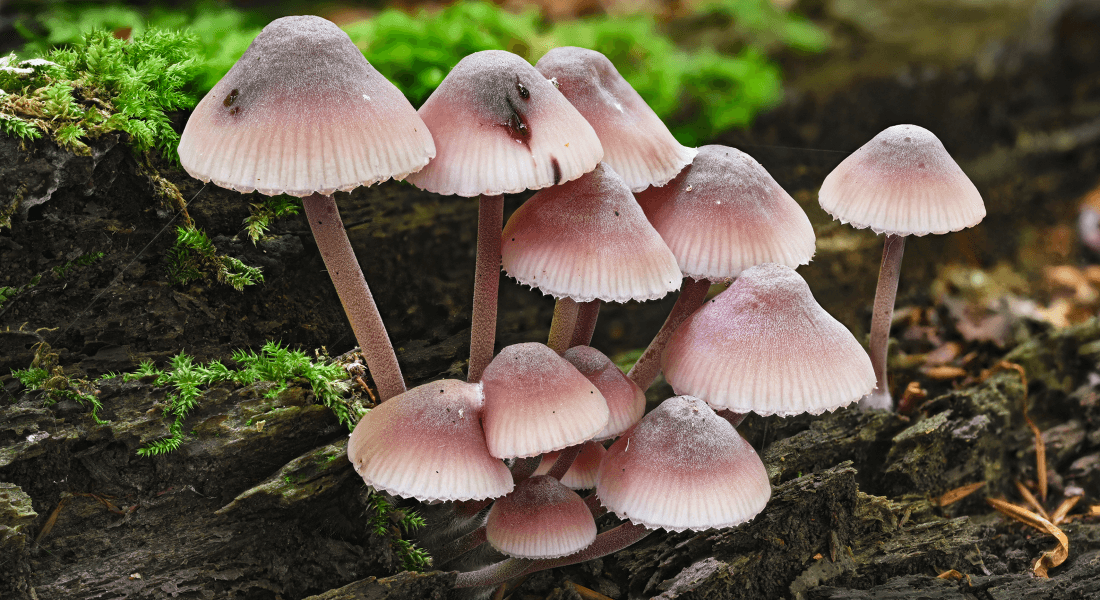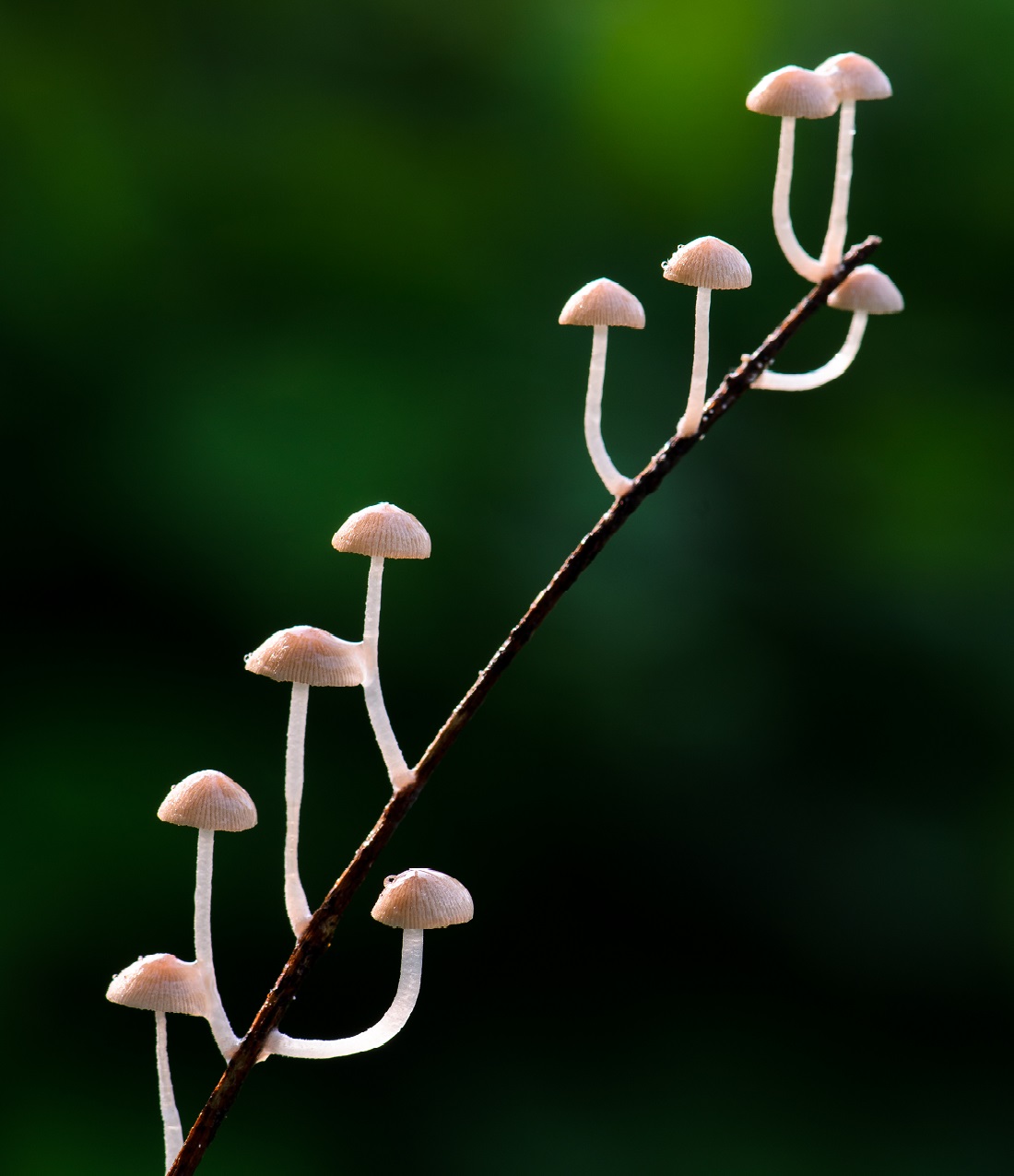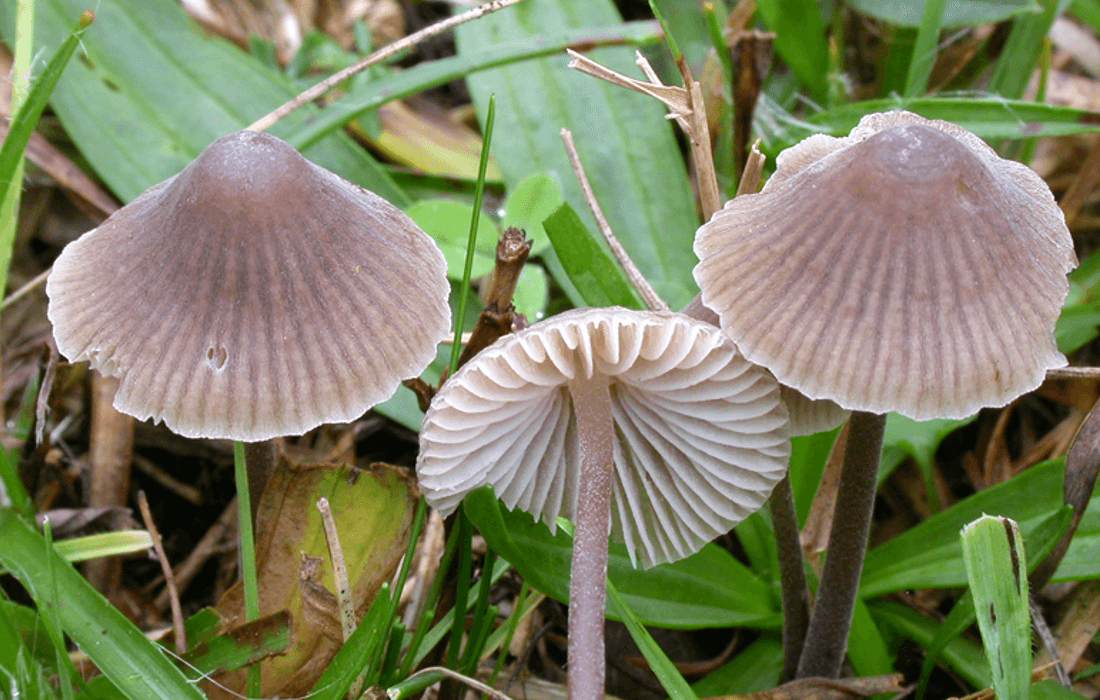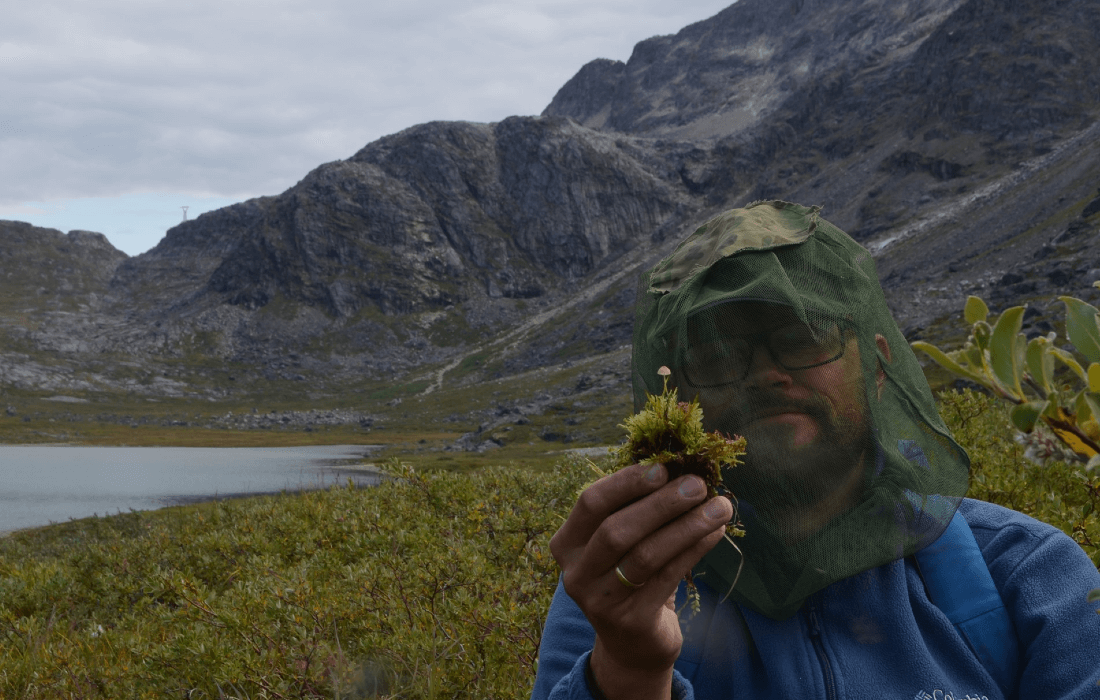Fungal evolution discovered: Mycena can now invade living hosts
Biologists have long known mushrooms of the genus Mycena, commonly known as bonnet mushrooms, as fungi that live off of dead trees and plants. New research from the University of Copenhagen demonstrates that bonnets can also find their ways into young, healthy trees and plants, where they try to cooperate. In doing so, they have made an evolutionary leap which challenges our understanding of the ecological roles of fungi.

Fungal spores float through the air. Thin strands of their mycelia creep along surfaces. They seek out defenseless hosts to wrap themselves around in webs of fungal growth. Their victims can then be used to satisfy their own need to devour and disperse.
That fungi have begun to invade the living is a horrific thought for anyone who ever thought that fungi only dined upon the dead. Or, at least for those who stream The Last of Us, a post-apocalyptic series in which humans battle relentless fungal-infected zombies.
Fortunately, reality is rarely so dramatic. But after Danish mycologists targeted local Mycena, known as bonnet mushrooms, it turned out that certain similarities emerged nevertheless.
New research from the University of Copenhagen’s Department of Biology suggests that this genus of fungi, which has traditionally been considered saprotrophic – i.e., a decomposer of nonliving organic matter – is in the midst of an evolutionary leap.
"Using DNA studies, we found that Mycena fungi are consistently found in the roots of living plant hosts. This suggests that bonnets are in the process of an evolutionary development, from uniquely being decomposers of nonliving plant material to being invaders of living plants, under favourable conditions," explains Christoffer Bugge Harder, the study’s lead author.

The research also demonstrates that some of these bonnet mushrooms species even show early signs of being able to act as mutualists – i.e., live in symbiosis with trees. Unlike the terrifying fungi in The Last of Us, the researchers believe that Mycena are primarily out to do good, as seen from the plant's perspective. This comes in the form of a kind of evolutionary courtship in which they live in harmony with their living hosts.
"We see that a some Mycena appear to exchange nitrogen, an indispensable nutrient for plants, with carbon from plants," says the researcher.
"Once having penetrated a living plant, fungi can choose three strategies. They can be harmful parasites and suck the life out of their new hosts; they can lurk like vultures, waiting harmlessly for the plant to die, and be the first to feast upon the "carrion"; or, they can begin working together. Some Mycena species are gradually developing the ability to collaborate, though it has yet to be finely tuned," says Christoffer Bugge Harder.
Good deeds challenge traditional roles
"Other fungi, the Amanita genus for example, are known to work together with living plants, an ability that they developed many millions of years ago. But Amanita have long since lost their ability to survive without their hosts. And that’s how we traditionally divided fungi into strictly separate ecological groups: mutualistic, parasitic or saprophytic," explains Christoffer Bugge Harder.
Mycena seem to fall somewhere in between the ecological niches.
"The strict division has been increasingly called into question, and our Mycena research supports a blurring of the lines. Some Mycena have found their own solution and span several different ecological roles," says Harder.

By looking at carbon isotopes in Mycena, the researchers were able to conclude that these fungi are saprotrophic decomposers, as well as mutualistic. And perhaps even parasitic.
"Mycena are opportunists. Unlike Amanita, they can easily grow without needing to invade plants, but should the opportunity arise, it’s a nifty bonus. They also seek out living roots, where they have nitrogen to offer – as fungi can take up nitrogen easier than a tree – for a reasonable price," explains Christoffer Bugge Harder.
Payment comes either in the form of carbon from the host while it is living, or when their friendly host dies, and the patient decomposer gets to work. Or perhaps both.
Seizing a human created opportunity
The favourable conditions sought after by Mycena seem to be related to human activity.
"It is reasonable to believe that we humans have played a role in this adaptation, because our monocultural plantations, stands of forest for example, have provided fungi with optimal conditions for adapting. The fungi seem to have seized upon this opportunity," he says.
Facts: The fungal kingdom’s three ecological niches
- Species that have specialized in living off of nonliving vegetation for millions of years are known as saprotophic fungi.
- Species that feed on living vegetation are called parasitic fungi.
- Fungi that coexist symbiotically with living trees and plants and exchange nutrients with their host are known as mutualistic.
However, the traditionally strict division of fungi into three ecological niches is increasingly being called into question. Mycena is a new example of a fungus that blurs the lines.
"Specialists thrive in old-growth forest. In this scenario, there aren’t many chances for Mycena to settle on living trees because specialized fungi are already present in this natural setting and don’t allow others in," says the mycologist.
On the other hand, human cultivated homogeneous plantations with young plants of the same age give Mycena a chance, because specialized fungi have yet to establish themselves. The same applies to harsh environments, such as in the Arctic, or disturbed environments, e.g., where there are many grazing animals about.
"These places present challenging conditions for many organisms, but Mycena are among those that seem to benefit," says Christoffer Bugge Harder.

Extra info: Fear not fungi
Recent research has demonstrated that many trees bear the seeds of their own destruction – or at least those of an effective funeral director, as some of the fungi that thrive at their roots are also ready to begin decomposing them once they die.
After we humans die, fungi often play an important role in our decomposition as well. However, Christoffer Bugge Harder assures that we should not be worried about fungi invading us while we are still alive.
"The human body, unlike trees, is exceptionally adept at protecting us from the enormous amounts of spores that we are exposed to on a daily basis," he says
Nevertheless, there has been an increased global focus on fungal infections as a threat to human health in recent years. This is because an essential aspect of the human body's defenses is our body heat, which is intolerable to many fungi. There is now speculation that climate change, and rising temperatures in particular, could lead to an adaptation in the fungal kingdom that would allow them to survive at our body temperature.
"It isn’t inconceivable that groups of fungi relevant to the ecological niche of humans could develop. But, there are lots of fungi in tropical regions which have already adapted to high temperatures. When they're not in our bodies anyway, it is due to our effective immune system. So, I don't see any reason to fear fungi – or at least not worry about Mycena," says Christoffer Bugge Harder.
Behind the research
In addition to Christoffer Bugge Harder, the following researchers have contributed to the study:
- Emily Hesling - University of Aberdeen, UK
- Synnøve S. Botnen - University of Oslo and Oslo Metropolitan University, Norway
- Kelsey E. Lorberau - University of Oslo and UiT - The Arctic University of Norway, Norway
- Bálint Dima - Eötvös Loránd University, Hungary and University of Helsinki, Finland
- Tea von Bonsdorff-Salminen - University of Helsinki, Finland
- Tuula Niskanen University of Helsinki, Finland and Royal Botanic Gardens, Kew, UK
- Susan G. Jarvis - UK Centre for Ecology & Hydrology, UK
- Andrew Ouimette - University of New Hampshire, USA
- Alison Hester - The James Hutton Institute, UK
- Erik A. Hobbie - University of New Hampshire, USA
- Andy F. S. Taylor - University of Aberdeen, UK The James Hutton Institute, UK
- Håvard Kauserud - University of Oslo, Norway
Contact
Christopher Bugge Harder
Postdoc
Institute of Biology
University of Copenhagen
cbharder@bio.ku.dk
+45 35 32 85 07
Kristian Bjørn-Hansen
Journalist and press contact
The Faculty of SCIENCE
University of Copenhagen
kbh@science.ku.dk
+45 93 51 60 02
